| |
 |
Current Funded Projects
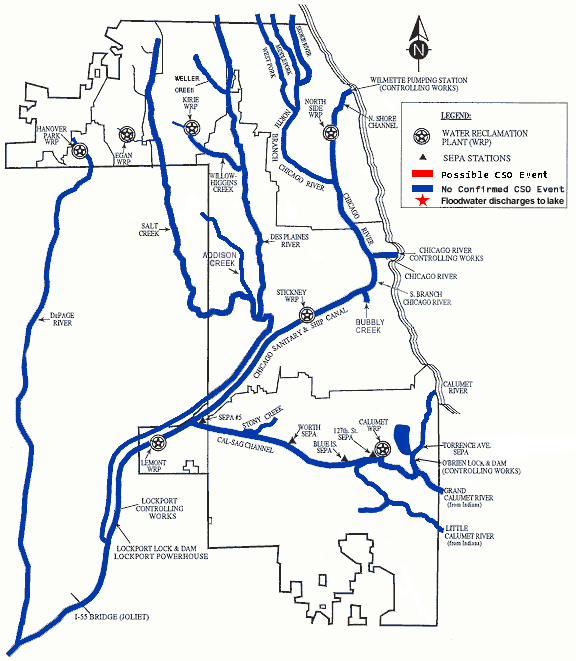
|
The Study of and Methodology Development for Loosely Coupled Networked Control Systems
with Disturbances. Funded by NSF CPS to Sept, 2013 (Estimated). Xiangyang Li, Principal Investigator; Co-PIs: ShangPing Ren, Paul Anderson, and Fouad Teymour.
The objective of this research is to understand the loosely coupled networked control systems and to address the scientific and technological challenges that arise in their development
and operation. The approach is to (1) develop a mathematical abstraction of the CPS, and an online actuation decision model that takes into account temporal and spatial dependencies among actions; (2) develop
algorithms and policies to effectively manage the system and optimize its performance with respect to applications' QoS requirements; and (3) develop an agent-based event-driven framework to facilitate engineers
easily monitor, (re)configure and control the system to achieve optimized results. The developed methodologies, algorithms, protocols and frameworks will be evaluated on testbeds and by our collaborating institution.
The project provides fundamental understanding of loosely coupled networked control systems and a set of strategies in managing such systems. The components developed under this project enables the
use of wireless-sensor-actuator networks for control systems found in a variety of disciplines and benefits waterway systems, air/ground transportation systems, power grid transmission systems, and the sort.
The impact of this project is broadened through collaborations with our collaborating institution. This project provides a set of strategies and tools to help them meet the new standards. The
inter-disciplinary labs and curriculum development at both undergraduate and graduate level with an emphasis on CPS interdisciplinary applications, theoretical foundations, and CPS implementations prepare our
students as future workforce in the area of CPS applications.
|

|
GreenObs: A Long-Term Kilo-Scale Wireless Sensor Network System in the Vast Forest.
for forest monitoring (collaboration with YunHao Liu from HKUST, JiZhong Zhao from Xi'An JiaoTong, Ming Gu from Tsinghua, GuoMo Zhou from Zhejiang Forestry Univ, GuoJun Dai from HangZhou DianZi, HuaDong Ma from
Beijing University of Posts and Telecommunications).
The missions of GreenOrbs are two fold:
On one hand, GreenOrbs realizes all-year ecological surveillance in the forest, collecting various sensory data including temperature, humidity, illumination, and carbon dioxide titer. The collected
information is utilized to support various significant applications, such as forest surveillance, forestry observation and research, fire risk evaluation, and succor in the wild.
On the other hand, GreenOrbs pioneers the effort in the sensor network community to build a practical system. Through the real-world experience in GreenOrbs, we expect to explore the potential design
space and scientific solutions, especially addressing the research and engineering challenges for a wireless sensor network system that is deployed in the virgin forest, involves 1000+ sensor nodes, and needs
to operate for over one year.
Check this for online data retrieving.
|
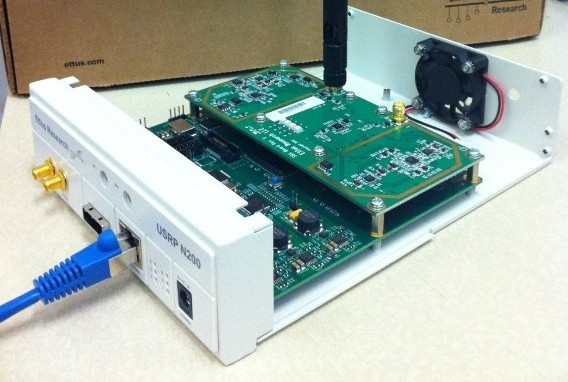
|
EARS: Providing Predictable Service and Spectrum Access With Realtime Decision in Cognitive Multihop Wireless Networks.
a three-year grant from the National Science Foundation.
The objective of this project is to design real-time temporal-spatial spectrum sharing, trading and accessing schemes to provide predictable service and improve the network
performances by fully exploiting the channel availability (e.g., spatial, temporal, and spectral) and quality (e.g., signal to interference plus noise ratio and data rate) diversities using cognitive radio
techniques.
|

|
CitySee project: a large scale sensor networks for monitoring city environment.
This is a project collaborated with Y. Liu from Tsinghua and several other faculty, supported by WuXi government and NSF of China.
In April 2011, we launched the CitySee system as the extention of GreenOrbs into urban CO2 monitoring area. CitySee inherits the self-organizing WSN technology of GreenOrbs. The goal
of CitySee is to deploy thousands of wireless sensor nodes in an urban area of Wuxi City, China, such that multi-dimensional data including CO2, temperature, humidity, light, location, and etc. could be collected in a
real-time manner for further analysis. The main applications of CitySee include measuring the carbon absorbance and emissions in different zones of a city, supporting the government's policy decision in energy saving
and emission reduction, and offer citizens with convenient daily living services.
|
Current Projects
Security
|

|
SecureNet
The SecureNet project tries to resolve the security issues lying in the networks such that no one gains extra information from the network. In general, our research targets at
1) protecting privacy of computation and 2) achieving verifiability of computation.
|
Wireless ad-hoc and sensor networks
|

|
TelosCAM: Identifying Burglar Through Networked Sensor-Camera Mates with Privacy Protection
In this project, we design a networking system that integrates wireless module nodes (such as TelosB nodes) with legacy surveillance cameras to provide storage-ef?cient
and privacy-aware services of accurate, realtime tracking and identifying of the burglar who stole the property. In this system,a property owner will have a wireless module node (called secondary module)
attached to the property that s/he wants to protect. The secondary wireless module node will not store any personal information about the owner, nor any speci?c information about the property to be protected.
Each user of the system will also have a unique wireless module node (called primary module) that contains some security information about the user, thus should be privately held by the user and be kept
to the user always. Once a tracking process is triggered in privacy preserving manner, the secondary module will start sending out the alarm signal periodically. The alarm signal will be captured by some
surveillance wireless module, integrated with existing surveillance cameras. Using the trajectory information provided by the secondary wireless module node, and the videos captured by the surveillance
cameras, our system will then automatically pinpoint a burglar (e.g., a person or a car) that is more likely to carry the stolen property.
|
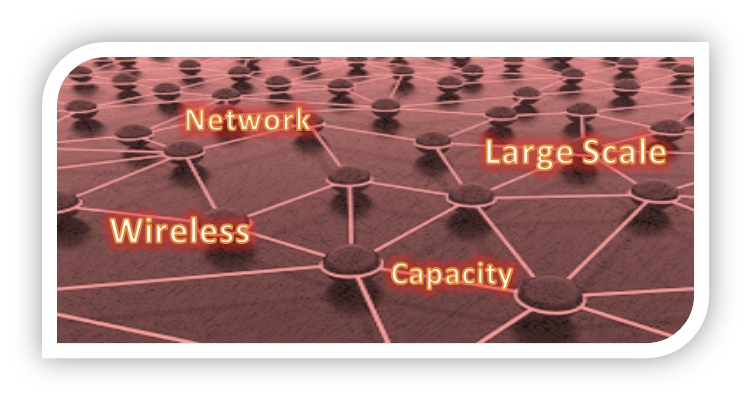
|
Capacity of a Large-Scale Random Wireless Network for Multicast
In this project, we study the capacity of a large-scale random wireless network for multicast. Assume that n wireless nodes are randomly deployed in a square region with fixed
side-length and all nodes have the uniform transmission range and uniform interference range. The aggregated multicast capacity is defined as the total data rate of all multicast sessions in the network.
|
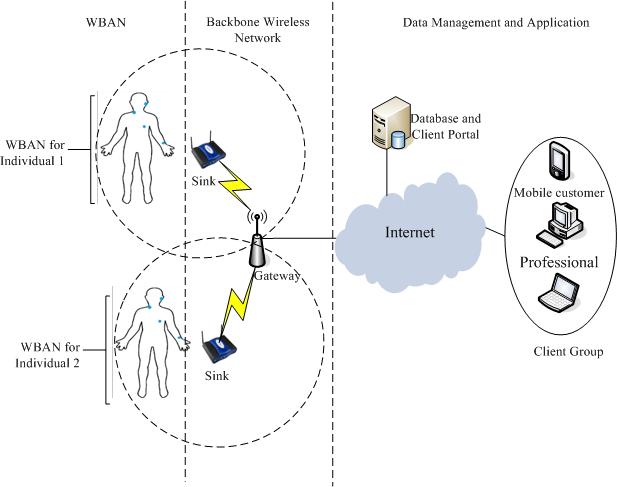
|
Wireless Body Area Network
With the evolution of biometrical sensor and mobile computing, a wearable healthcare system which is called Wireless Body Area Network (WBAN) is presented to monitor and
record medical data from an individual and transmit them through wireless communication to a data server. This data plays a significant role as an auxiliary for diagnosis or treatment of diseases. Especially
for chronic patients or the elder, WBAN has potential of enhancing real-timing data collection, reducing cost and decreasing hospital visiting times.
|
Mobile Computing
|
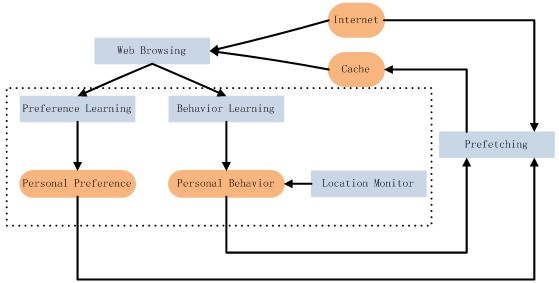
|
Network Agile Preference-Based Prefetching for Mobile Devices
For mobile devices, communication via cellular networks consumes more energy, and has a lower data rate than WiFi networks, and suffers an expensive limited
data plan. However the WiFi network coverage range and density are smaller than those of the cellular networks. The key challenge is how to help users reduce the energy and monetary cost of
data communication while not sacrificing the user experience when users are able to occasionally get access to WiFi networks.
|
Location-Based Services
|

|
Smart-Loc: Where am I?
GPS localization in outdoor scenarios dominates the past few decades. However, in the metropolis, GPS could not provide precise location for drivers not only because of the weak GPS
signal, but also the complicated road infrastructure. With the rapid development of micro electronic and mechanical system, most of the smartphones nowadays are equipped with multiple sensors, such as accelerometer,
gyroscope, and magnetometer. These sensors offer a good opportunity for providing additional sensory data, which could be used to elevate the location accuracy while driving. We develop Smart-Loc, a novel smartphone
based localization technique for localization in the city. While locating, It also integrates the ability of self-learning, which provide more accurate location while driving.
|
Smart Grid
|

|
Smart Grid
Current electricity grid, which has been in operation for more than five decades, suffers from low energy efficiency, poor security and heavy pollution. To overcome these shortcomings,
smart grid was proposed and has received much attention ever since. Currently, smart grid still faces many challenges such as efficient integration of renewable energy sources, real-time control of smart devices, intrusion
detection, etc. Our work on smart grid involves researches both on the macro scope and micro scope. On the macro scope, we try to establish a real time price (RTP) system which encourages consumers to utilize the unstable
renewable energy (Solaris, wind, etc). On the micro scope, we try to integrate smart appliances (appliances with computation and communication abilities) into the smart grid. Our focus of this part is how to efficiently
manage those appliances to help the consumer save money. Our research involves both theoretical studies and real-world implementations.
|
Social Network
|

|
Relationship Information Propagation
In this project, we study two tightly coupled topics in online social networks (OSN): relationship classification and information propagation. The links in a social network often
reflect social relationships among users. In this work, we first investigate identifying the relationships among social network users based on certain social network property and limited pre-known information. Social
networks have been widely used for online marketing. A critical step is the propagation maximization by choosing a small set of seeds for marketing. Based on the social relationships learned in the first step, we show
how to exploit these relationships to maximize the marketing efficacy. We evaluate our approach on large scale real-world data from Renren network, confirming that the performances of our relationship classification and
propagation maximization algorithm are pretty good in practice.
|

|
Location Cloak: Privacy-preserving Location Query Service
LC is an LBS(Location Based Service) App of Tencent Weibo which is designed to help users managing their location information in order to protect their privacy.
No one could get the exact information about the Publisher except the Publisher himself and the ones who he allowed, even the Tencent server do not know the information.
4 different levels of information could be given to the queriers, level 4 is the exact location and the lower level means the vaguer information. Users can easily hide their location information
by using this 'cloak'.
|

|
Driver-texting Detecting
Driver-texting now becomes a huge problem in car driving safety. The risk of crash or near event crash happened over 23 times if the driver text messaging when drive a heavy vehicles
or trucks. For this project, the main challenge is Detecting Drivers, which means we need to distinguish the driver from the passengers. There are some related work, such as 'Detecting Driver Phone Use Leveraging Car
Speakers' from Mobicom 2011 which declaim a solution by using car speakers. But there must be some hypotheses which are unexpected like the speakers must be made some changes. So our solution will not change anything,
just by using smartphone sensors to collect some features like Gyro, GPS, Acceleration and so on and then learn some patterns of the critical actions made by a driver. If user's behavior matches these patterns, we can
know that they are texting while driving a car. We also suggest some preventing methods.
|
Cloud Computing
|

|
Personal Cloud
Personal Cloud project tries to connect all the home/office and mobile devices together to form an integrated cloud application that
will work collectively to share data as well as computing resources. The system consists of three major components: commercial cloud, home/office cloudlet and mobile computing network.
We are trying to develop a software framework, as the ultimate goal, that aggregates home/office and mobile computing resources with proper allocation, such that developers could use it
to build applications/services with efficiency, mobility and privacy.
|
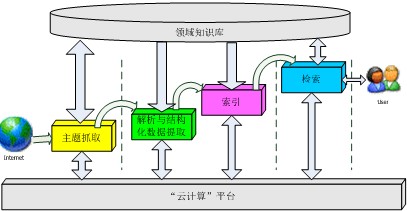
|
Topic-based Search Engine
The main functions of a topic-specific search engine are topic-oriented information crawling, information extracting and indexing, structured data
integration and storage, and finally information retrieve services. The topic-specific search engine is to meet the needs of Web users for specific information storage and retrieve.
Compared with the general search engine, the vertical search is more domain-specific and can provide the Web users more types of information retrieving results. Therefore, the vertical
search is a new developing trend of Internet information retrieve. In this project, we focus on the key problems of vertical search engine, which includes the construction of domain
knowledge repository, topic-specific information crawling and extracting, non-structured information indexing, structured data integration, and so on. Based on the achievements in this
project, we plan to implement a framework of vertical search, which integrates Map/Reduce and HDFS.
|
Past Projects
-
Imagine what happens as more devices go wireless -- not just laptops, or cell phones and BlackBerrys, but sensor networks that monitor everything (from temperature in buildings
to moisture in cornfields), radio frequency ID (RFID) tags that track merchandise at the local Wal-Mart, devices that monitor nursing-home patients. All these gadgets have to share a finite -- and increasingly
crowded -- amount of radio spectrum. As a consequence, today new wireless technologies are struggling for bandwidth. Dynamic sharing of spectrum can provide a system some flexibility. Our society will gain substantial
benefits, both in the short run and in the long run, from introduction of SOP sharing. This work will greatly improve the network performance, and have broad impact on the efficient usage of scarce spectrum resource in
networks and furthermore, our society. This project is expected to improve the overall wireless spectral efficiency; enable wireless devices or systems to make full use of spectral resources in an autonomous and
distributed manner; stimulate new applications to take full advantage of cognitive radios for better QoS; and provide an excellent vehicle for educating students with hands-on experience.
This work will develop, design, and implement efficient wireless network protocols for better spectrum utilization and study some fundamental performance bounds for networks with
opportunistic spectrum utilization. This work will study the Nash Equilibrium points of the spectrum sensing game and spectrum access game when secondary users are selfish. This work will design stable distributed link
scheduling and routing methods to maximize throughput, and derive some necessary and/or sufficient conditions on attainable flows. This work will also develop tractable and insightful metrics and models for wireless
networks using SOPs; obtain upper and lower performance bounds for these metrics for a given set of models; define the negotiation between application and network for picking the operating point.
More readings in the topic of spectrum sharing and cognitive radio: Cognitive Networking, and local backup.
SOME PUBLICATIONS PRODUCED AS A RESULT OF THIS RESEARCH
- Xiang-Yang Li, Ashraf Nusairat, Yanwei Wu, Yong Qi, JiZhong Zhao, Xiaowen Chu, and YunHao Liu. "Joint Throughput Optimization for Wireless Mesh Networks," IEEE Transaction on Mobile
Computing (TMC), 2009.
- Xiang-Yang Li, Yu Wang, Haiming Chen, Xiaowen Chu, Yanwei Wu, Yong Qi,. "Reliable and Energy Efficient Routing for Static Wireless Ad Hoc Networks with Unreliable Links," IEEE
Transactions on Parallel and Distributed Systems (TPDS), 2009, p. 1408.
- Yan-Li Cai, Wei Lou, Ming-Lu Li, and Xiang-Yang Li. "Energy-efficient Target-Oriented Scheduling in Directional Sensor Networks," IEEE Transaction on Computers, 2009.
-
OceanSense. Sensor Network for Sea Monitoring (collaboration with YunHao Liu from HKUST).
OceanSense aims to build an integrated sensor network system for environment surveillance on the sea. The focus of this work is to acquire and analyze information about environment
factors such as temperature, light illuminance, sea depth, etc. Current methods are mostly labour-intensive and the data collection lacks both the density and consistency of samplings. By deploying a wireless sensor
network, we are able to achieve continuous surveillance on the sea environment.
We are deploying the working system in Tsingtao, China. We use TelosB motes and TinyOS as our development basis. Current system consists of 20 sensor nodes deployed in the field,
reporting sensing data continuously to the base station. The complete system is designed to scale to hundreds of sensors covering the sea area off Taipingjiao, Tsingtao.
A short demo about our deployment:
-
Orthogonal variable spreading factor (OVSF) code provides a means of support of variable rate data service at low hardware cost in CDMA wireless systems. In an OVSF-CDMA wireless ad hoc network, a code
assignment has to be conflict-free, i.e., two nodes can be assigned the same codeword or two non-orthogonal codewords if and only if neither of them is within the transmission range of the other and no other node is
located in the intersection of their transmission ranges. In this proposal, we propose to study various optimization problems on conflict-free channel assignments in OVSF-CDMA wireless ad hoc networks. The proposed
studies include conflict-free channel assignment for maximum throughput, for maximum bottleneck rate, and for both at the same time, and transmission scheduling for minimum schedule duration when all nodes have specified
transmission rate. All these optimization problems are expected to be NP-hard even when all nodes have the uniform transmission radii. We will prove the NP-hardness of these problems and develop provably good
polynomial-time approximation algorithms. These studies are both theoretical challenging and practical important for the deployment of OVSF-CDMA wireless ad hoc networks. Furthermore, since wireless ad hoc networks
support applications related to disaster relief, public event coordination, and military and law enforcement operations, increasing their throughput and communication bottleneck has vast societal impact.
SOME PUBLICATIONS PRODUCED AS A RESULT OF THIS RESEARCH
- Li, X.-Y., and Wang, Y.. "Simple approximation algorithms and ptass for various problems in wireless ad hoc networks," Journal of Parallel and Distributed Computing, 2006.
- Li, X.-Y., Song, W.-Z., and Wang, W.. "A unified energy efficient topology for unicast and broadcast," ACM MobiCom, 2005.
- Li, X.-Y., Tang, S.-J., and Ophir, F.. "Multicast capacity for large scale wireless ad hoc networks," ACM Mobicom, 2007.
- Wang, W., Wang, Y., Li, X.-Y., Song, W.-Z., and Frieder, O.. "Efficient interference aware tdma link scheduling for static wireless mesh networks," ACM Mobicom, 2006.
- Wang, Y., Wang, W., and Li, X.-Y.. "Efficient distributed low-cost weighted backbone formation for wireless ad hoc networks," ACM MobiHoc, 2005.
- X.Y. Li, P.-J. Wan. "Theoretically Good Distributed CDMA/OVSF Code Assignment for Wireless Ad Hoc Networks," COCOON 2005, 2005.
Copyright © 2010,
Wireless Networking Research Lab, Department of Computer
Science, Illinois Institute of Technology |
|
|